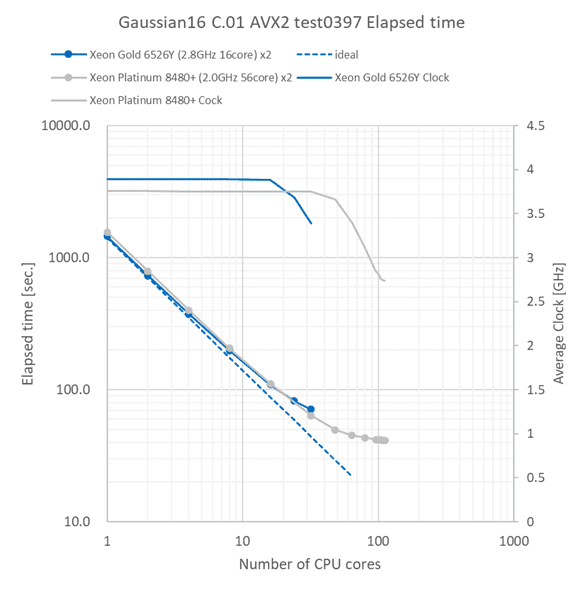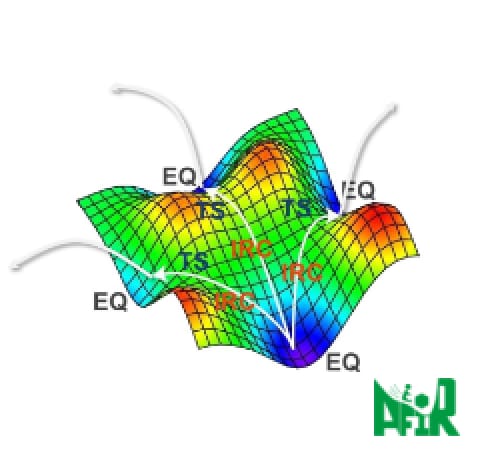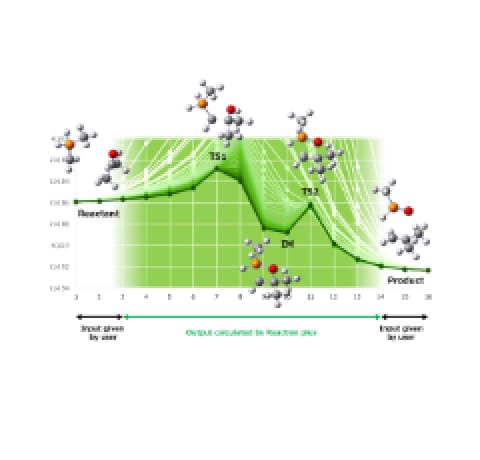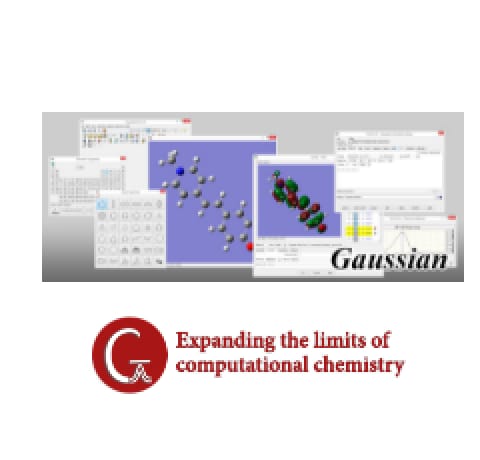The 5th generation Intel® Xeon® Scalable Processor (codename: Emerald Rapids) was released on December
14, 2023 (December 15, Japan time). It has been miniaturized using the "Intel 7" manufacturing process and
can now accommodate up to 64 cores in a single socket. In addition, the UPI connection speed between CPUs
has been improved to 20 GT/s. The size of the Last Level Cache, which is shared among cores, has been
expanded to 320 MB, enhancing functionality for AI and HPC workloads that require intensive memory access.
Furthermore, it now supports DDR5-5600 memory, providing a wider memory bandwidth. This demonstrates that
Intel is continuously making efforts to enhance functionality.
To investigate the performance of the
5th generation Intel® Xeon® Scalable Processor, we conducted benchmarking with various scientific
applications to compare the actual performance between a 2-socket machine with the 5th generation Intel®
Xeon® Scalable Processor and a 2-socket machine with the 4th generation Intel® Xeon® Scalable
Processor.
Here, we present one of the benchmark results, evaluated using Gaussian. We have also
conducted benchmark tests for other applications such as HPL, STREAM, Amber, and VASP. If you are
interested in the benchmark results for these applications or additional information, please feel free
to contact us.
Table of contents
1.Features of the 5th Generation Intel® Xeon® Scalable Processor (Emerald Rapids)
- The "Intel 7" manufacturing process has enabled miniaturization, allowing the top-bin SKU, "Xeon Platinum 8593Q," to support up to 64 cores per socket (compared to a maximum of 60 cores in the previous generation).
- While the UPI (Ultra Path Interconnect), used for connecting CPU sockets, still supports a maximum of 4 links per CPU, the UPI speed has been increased to up to 20 GT/s (up from 16 GT/s in the previous generation).
- The accelerators integrated in the previous generation, including Advanced Matrix Extensions (AMX) instructions for accelerating AI workloads, Data Streaming Accelerator (DSA) for streaming data transfers, Accelerator Interfacing Architecture (AiA), and Intel Quick Assist Technology for encryption and data compression/decompression, remain available in this generation.
- The processor also includes a Last Level Cache of up to 320MB, shared across cores.
- This generation is limited to 1-socket and 2-socket configurations, whereas the previous generation supported 1-socket, 2-socket, 4-socket, and 8-socket configurations.
- The number of memory channels per CPU remains the same as the previous generation at 8 channels, but the new processor now supports DDR5-5200 MT/s and DDR5-5600 MT/s memory (1.08 times and 1.17 times faster than the previous generation's DDR5-4800 MT/s, respectively).
- The installation of 80 PCIe lanes supporting Gen 5.0 remains unchanged from the previous generation.
- This generation also supports Compute Express Link (CXL) 1.1 and accommodates up to 4 CXL devices per
socket. Additionally, it introduces support for CXL1.1 Type 3, allowing configurations with 4 channels
from CXL memory and 8 channels from main memory, providing a total of 12 channels and enabling memory
configurations that prioritize bandwidth.
2.Benchmark Test with Gaussian
We conducted benchmarking with Gaussian, the de facto standard for quantum chemistry calculations. The standard binary package provided by Gaussian, optimized for AVX2, was used for the test (note: it does not support AVX-512).
We recorded the elapsed time using the test0397 input included with the Gaussian package (Valinomycin molecule C54H90N6O18, Force calculation with RB3LYP/3-21G). Additionally, we recorded the elapsed time for an input with a changed basis set to 6-31G(d,p) (referred to as rkest0397). The graph also includes the average effective operating clock speed measured using the perf command included with Linux.

Feature: Achieving Equivalent
Performance to the Previous Generation
In terms of CPU operating
clock speed, the Emerald Rapids environment achieved equivalent performance to the previous generation.
Since there are no significant differences in the architecture of the CPU or cores compared to the
previous generation, it is considered reasonable that the results show nearly the same effective
performance.
3. For More Info
Additionally, we have carried out benchmark tests for applications such as HPL, STREAM, Amber, and VASP. For more details on these benchmark results or additional information, please do not hesitate to contact us through our Contact page.
Last Update
First released on Oct.23, 2024









